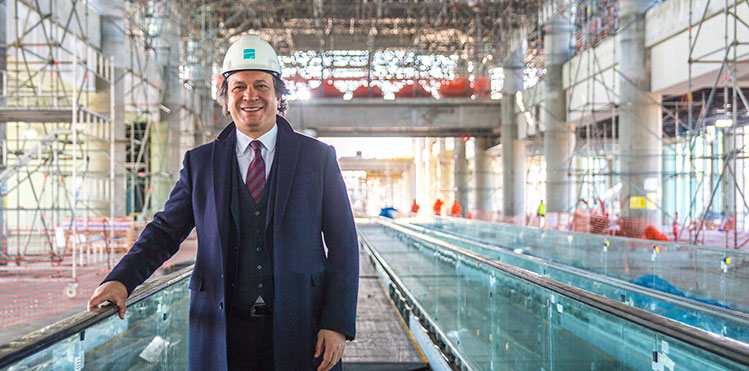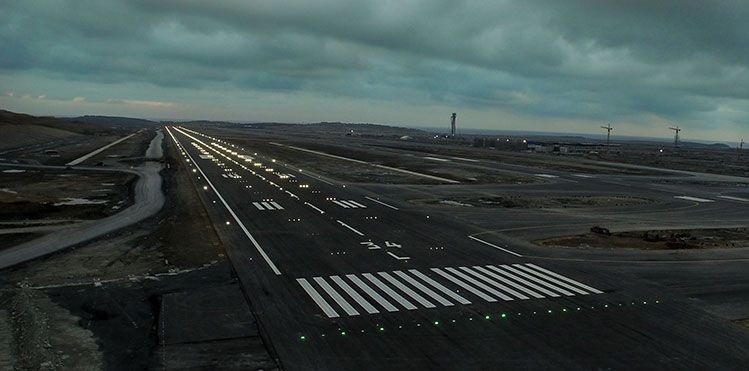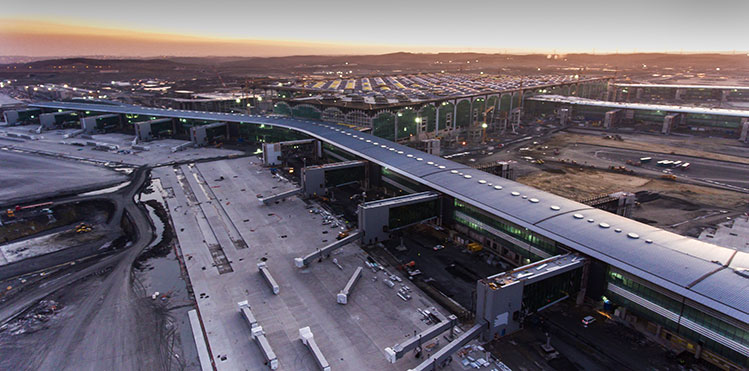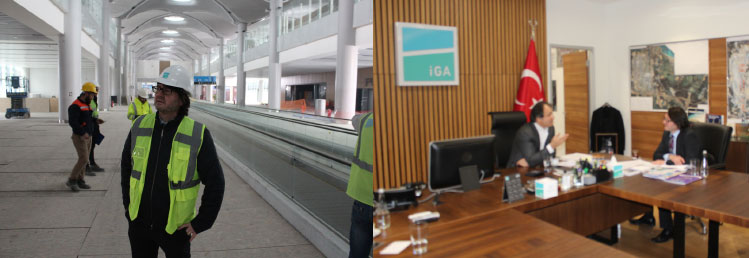A discussion with Yusuf Akçayoğlu, CEO of İGA Airports Construction. Interview by Paul Hogan

Yusuf Akçayoğlu, CEO İGA Airports Construction: “The last 10% takes time, the final 5% is then the snags, and that also takes time, but it will not affect operations. 95% completion is the target – what we have done in 3.5 years would have taken 10-15 years in any other part of the world.”
It’s really happening – Airport Business has been on site and we have seen for ourselves. The target is unwavering: The €10.3 billion Istanbul New Airport – Istanbul right now the fourth-biggest transfer hub in Europe (after Frankfurt and before Amsterdam) – will begin commercial operations on 29 October this year – Turkish National Day. Upon completion of all phases, Istanbul New Airport is going to be one of the major hubs across a very large geographic area.
A construction task of this magnitude has never been attempted or achieved in the airports world before, says Yusuf Akçayoğlu, CEO İGA Airports Construction: “It’s unprecedented. But since day one this has been a very, very fast-build project. Some of our activities will continue until the last day of construction… and of course will also continue on after that with the next planned phases.” (Phase 1a includes the terminal and two runways and spans 42 months, Phase 1b, including a third runway will be completed at 58 months.)

Phase 1a includes the terminal and two runways and spans 42 months, Phase 1b, including a third runway will be completed at 58 months. Construction of the first 3,750m runway is complete.
“The project [as of February] is over 80% complete and, despite some of the problems of land preparation, it is more-or-less on budget.”
The five construction partners are highly skilled in big, even mega, construction projects, including building major airports: Leading İGA partners previously built (and operated) Istanbul’s 31 million-throughput Sabiha Gökçen Airport – where joint venture partners are right now also simultaneously building a second runway opening in 2019. Joint venture partners also lead a significant number of on-going airport construction projects in the Middle East and Africa – including the new $4 billion air terminal in Kuwait.

A construction task of this magnitude has never been attempted or achieved in the airports world before, says Yusuf Akçayoğlu, CEO İGA Airports Construction: “It’s unprecedented. But since day one this has been a very, very fast-build project. Some of our activities will continue until the last day of construction… and of course will also continue on after that with the next planned phases.”
But while airports are not new to İGA, Akçayoğlu says that some quite different fast-build strategies have needed to be perfected and used for the first time at Istanbul New Airport: “The critical path for the 42km baggage handling system was done first – we didn’t wait for the roof to be topped out – in fact the BHS is very much ahead of schedule, and therefore the terminal completion is very advanced in terms of its most complex systems. Furthermore, the BHS is not just completed, but it will achieve the levels of efficiency which are absolutely essential to this transfer hub: lost luggage will be almost zero.”
In an aside, Akçayoğlu explains that the new BHS will include a Robotic Bag Store for up to 16,000 bags. With this capability İGA’s infrastructure enables very important commercial opportunities which have become central to the transfer proposition over Istanbul, especially for travellers with longer transfer times. For instance, Turkish Airlines’ has a specific “Touristanbul” transit product which offers organised and controlled tours.
As the airport’s dominant user, Turkish Airlines has many of its own third party technical and operational construction projects at Istanbul New Airport, including its new HQ. “There are 128 critical buildings other than the terminal, and 6,700 rooms including technical rooms – can you imagine such a hospital?!” remarks Akçayoğlu. “Turkish Airlines are our biggest customer, so we are working closely with them to make sure they have what they need for the new hub, we value all their requests very much, while not forgetting that our primary client is DHMI.”
As construction moves on at a frenetic pace up to 36,000 people are working on the site, including 2,300 expatriate workers. Although this foreign labour content may be much less than on comparable construction projects in Europe or the Middle East, the import of manpower on this scale is a first for Turkey, and marks another big change in an economy that is normally a net exporter of labour. “We have welcomed many new nationalities to the workforce, including Vietnamese, Uzbeks, Pakistani, Nepalese and Turkmen, it is a radical shift and was never expected,” observes Akçayoğlu.
Indeed, significant labour-intensive efforts were required during ground preparation for which Akçayoğlu says: “We have had to develop enormous resources – large portions of the new airport are built on ‘brown field’ mines dating from the 1940s-60s; we could not easily predict the conditions of these old works, and the ground conditions have been very challenging because of the sheer size. We have had to remove huge amounts of mud, and use just about every known available method of preparation – rockfill, columns, dynamic compaction etc. All the material was loose, we had to remove that to reach the original soil, and then go back yet again before we could start back, all the time filling to get the bearing compacted and reach platform levels – in some places there are 65 metres of backfill – it is an understatement to say that it was more difficult than expected!”
Only after all these monumental efforts could İGA start to place a terminal building onto this platform. Despite the requirement for entirely different skillsets, Akçayoğlu then effortlessly switches from discussing ultra-heavy construction to the finer points of the experiential innovations which are currently being fitted out throughout the terminal. “The operational philosophy of the terminal is ‘maximum comfort at minimum wait time’. There are 10,000 sensors and beacons, and we are utilising IoT and smart systems across all devices, programs and apps. The belief is that we should enable the traveller to proceed as far as desirable without any human contact during Home-to-Gate processing.”

İGA interview by Paul Hogan on location Istanbul New Airport construction site
Great efforts have been made to avoid disruption to this potentially idyllic journey – for instance potential bottlenecks in security are literally being tackled head-on with the “most sophisticated security systems in the world” including constantly-monitored facial recognition. This has been heavily tested in the İGA offices where every arriving construction worker is personally ‘greeted’ by their own scanned image and verified identity.
Now over 80% complete, and with some hard-won achievements behind him, Akçayoğlu knows the final phase is going to throw up new challenges of its own: “The last 10% takes time, the final 5% is then the snags, and that also takes time, but it will not affect operations. 95% completion is the target – what we have done in 3.5 years would have taken 10-15 years in any other part of the world.”







